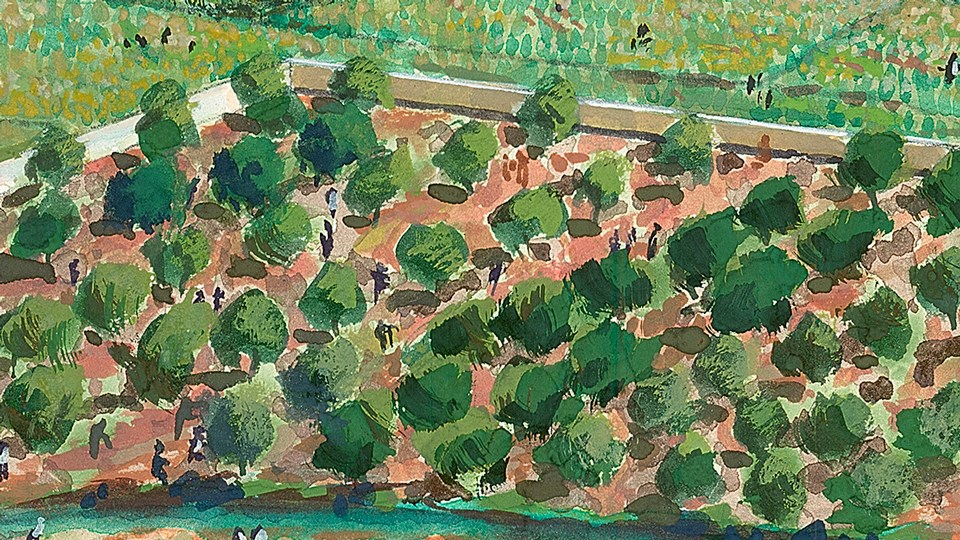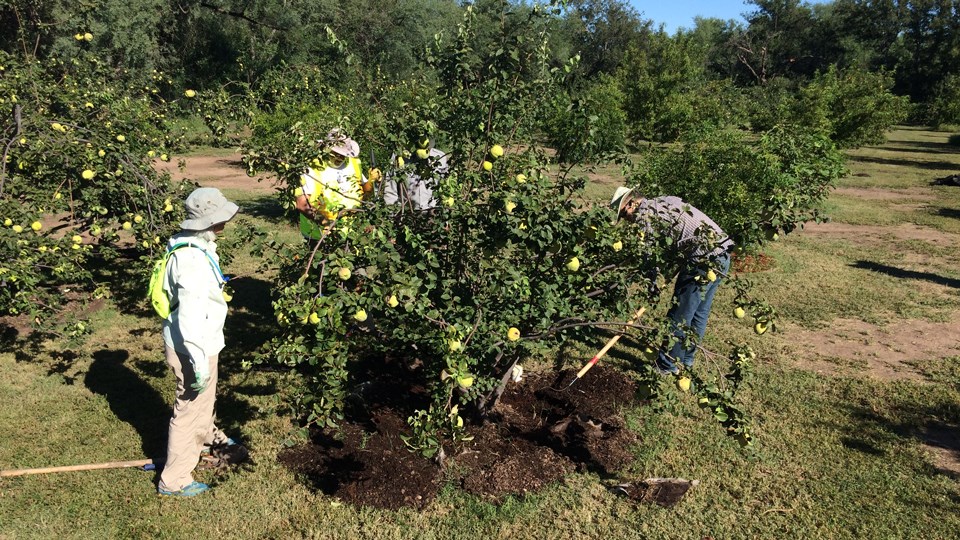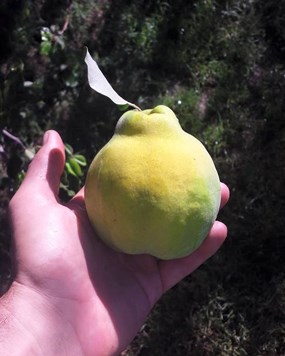|
Orchard 

Left image
Right image
How It WasAn integral part of the Spanish colonial system was the establishment of orchards and gardens. Missionaries introduced a multitude of old world crops to the frontline of Spanish settlements to supplement the already established and recognized food sources in the Pimería Alta. This introduction of European-style orchards and fields began shifting the agricultural practices of native peoples. 
How It Is NowThe original nine acres set aside as Tumacácori National Monument did not include the orchard site; however, this area was part of an expansion in 2002, containing remnants of the orchard wall and acequia. In 2007, the park, University of Arizona, and Arizona-Sonora Desert Museum launched a collaborative effort called the Kino Heritage Fruit Trees Project. The objective of this project was to locate historical documents in Mexico and the United States to identify communities where fruit trees descended from the Spanish Mission System might still grow. The results identified 21 towns in Arizona and Sonora which fit the criteria. During visits to these towns eleven fruit cultivars were identified as being appropriate for the project. Seeds, cuttings and grafting material were then collected for propagation from the suitable trees. Orchards Around the National Parks |
Last updated: July 23, 2020
